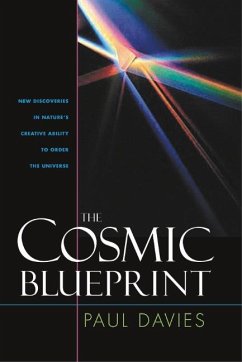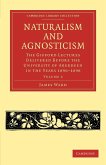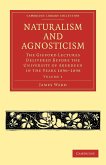Schade – dieser Artikel ist leider ausverkauft. Sobald wir wissen, ob und wann der Artikel wieder verfügbar ist, informieren wir Sie an dieser Stelle.
- Broschiertes Buch
- Merkliste
- Auf die Merkliste
- Bewerten Bewerten
- Teilen
- Produkt teilen
- Produkterinnerung
- Produkterinnerung
- An origin-of-the-universe classic, back in print - Insightful theories clarified for both lay readers and scientists - Perfect for classroom use
Andere Kunden interessierten sich auch für
- An origin-of-the-universe classic, back in print - Insightful theories clarified for both lay readers and scientists - Perfect for classroom use
Produktdetails
- Produktdetails
- Verlag: Templeton Press
- First Edition, First edition
- Seitenzahl: 232
- Erscheinungstermin: 16. April 2004
- Englisch
- Abmessung: 229mm x 151mm x 18mm
- Gewicht: 363g
- ISBN-13: 9781932031669
- ISBN-10: 1932031669
- Artikelnr.: 21349947
- Herstellerkennzeichnung
- Libri GmbH
- Europaallee 1
- 36244 Bad Hersfeld
- gpsr@libri.de
- Verlag: Templeton Press
- First Edition, First edition
- Seitenzahl: 232
- Erscheinungstermin: 16. April 2004
- Englisch
- Abmessung: 229mm x 151mm x 18mm
- Gewicht: 363g
- ISBN-13: 9781932031669
- ISBN-10: 1932031669
- Artikelnr.: 21349947
- Herstellerkennzeichnung
- Libri GmbH
- Europaallee 1
- 36244 Bad Hersfeld
- gpsr@libri.de
Paul Davies is professor of natural philosophy in the Australian Centre for Astrobiology at Macquarie University. His research has spanned the fields of cosmology, gravitation, and quantum field theory, with particular emphasis on black holes and the origin of the universe. He is currently working on the problem of the origin of life and the search for life on Mars. He is a well-known author, broadcaster, and public lecturer and has written over twenty-five books. Among his better-known works are God and the New Physics, The Mind of God, About Time, The Fifth Miracle, and How to Build a Time Machine. In recognition of his work as an author, he was elected as fellow of The Royal Society of Literature in 1999. His contributions to science have been recognized by numerous awards, including the 2002 Michael Faraday Prize by the Royal Society and the 2001 Kelvin Medal and Prize from the U.K. Institute of Physics. In April 1999 the asteroid 1992 OG was officially named (6870) Pauldavies in his honor. His most significant award was the 1995 Templeton Prize for Progress in Religion, the world’s largest prize for intellectual endeavor.
Preface to the 2004 Edition
ix Preface to the First Edition
xv Chapter 1 Blueprint for a Universe
3 Chapter 2 The Missing Arrow
9 Chapter 3 Complexity
21 Chapter 4 Chaos
35 Chapter 5 Charting the Irregular
57 Chapter 6 Self-Organization
72 Chapter 7 Life: Its Nature
93 Chapter 8 Life: Its Origin and Evolution
107 Chapter 9 The Unfolding Universe
121 Chapter 10 The Source of Creation
138 Chapter 11 Organizing Principles
152 Chapter 12 The Quantum Factor
165 Chapter 13 Mind and Brain
183 Chapter 14 Is There a Blueprint?
197 References
205 Further Reading
211 Index
215
ix Preface to the First Edition
xv Chapter 1 Blueprint for a Universe
3 Chapter 2 The Missing Arrow
9 Chapter 3 Complexity
21 Chapter 4 Chaos
35 Chapter 5 Charting the Irregular
57 Chapter 6 Self-Organization
72 Chapter 7 Life: Its Nature
93 Chapter 8 Life: Its Origin and Evolution
107 Chapter 9 The Unfolding Universe
121 Chapter 10 The Source of Creation
138 Chapter 11 Organizing Principles
152 Chapter 12 The Quantum Factor
165 Chapter 13 Mind and Brain
183 Chapter 14 Is There a Blueprint?
197 References
205 Further Reading
211 Index
215
Preface to the 2004 Edition
ix Preface to the First Edition
xv Chapter 1 Blueprint for a Universe
3 Chapter 2 The Missing Arrow
9 Chapter 3 Complexity
21 Chapter 4 Chaos
35 Chapter 5 Charting the Irregular
57 Chapter 6 Self-Organization
72 Chapter 7 Life: Its Nature
93 Chapter 8 Life: Its Origin and Evolution
107 Chapter 9 The Unfolding Universe
121 Chapter 10 The Source of Creation
138 Chapter 11 Organizing Principles
152 Chapter 12 The Quantum Factor
165 Chapter 13 Mind and Brain
183 Chapter 14 Is There a Blueprint?
197 References
205 Further Reading
211 Index
215
ix Preface to the First Edition
xv Chapter 1 Blueprint for a Universe
3 Chapter 2 The Missing Arrow
9 Chapter 3 Complexity
21 Chapter 4 Chaos
35 Chapter 5 Charting the Irregular
57 Chapter 6 Self-Organization
72 Chapter 7 Life: Its Nature
93 Chapter 8 Life: Its Origin and Evolution
107 Chapter 9 The Unfolding Universe
121 Chapter 10 The Source of Creation
138 Chapter 11 Organizing Principles
152 Chapter 12 The Quantum Factor
165 Chapter 13 Mind and Brain
183 Chapter 14 Is There a Blueprint?
197 References
205 Further Reading
211 Index
215





